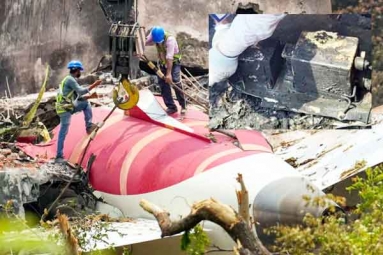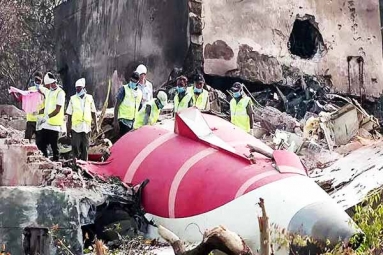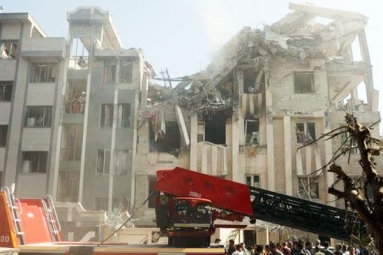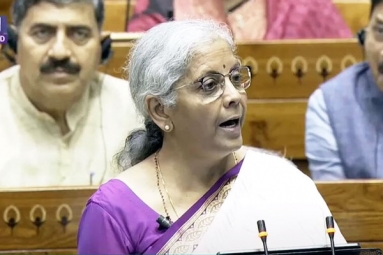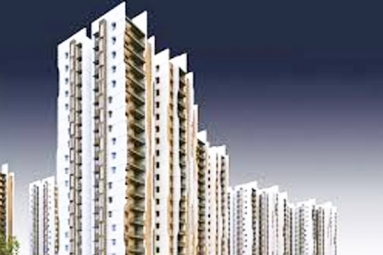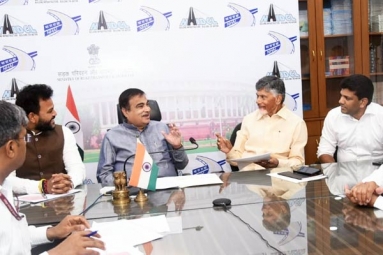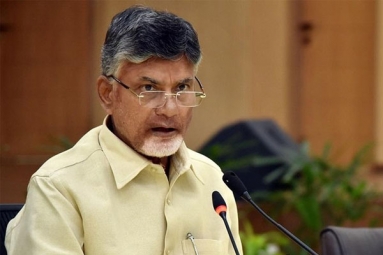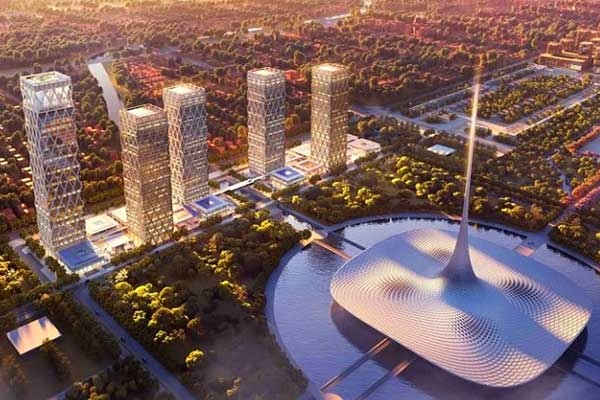
(Image source from: x.com/AP_CRDANews)
Signs of revival are evident in a city that was essentially a ghost town for the past five years. Since Chief Minister Chandrababu Naidu resumed leadership in June 2024, the momentum for Amaravati's development has been reignited, fueled by new financial investments, a resurgence of foreign interest, and updated timelines. For a state that has been without its capital for ten years, this revitalization is long overdue. As construction on the capital project recommences, anticipation builds for May 2, when Prime Minister Modi will ceremonially reactivate this once inactive city. Yet, Amaravati represents more than a political commitment; it is an ambitious greenfield capital characterized by a globally designed master plan and an innovative land pooling model that directly involves local farmers. Its advancement faced interruptions in 2019 due to a government shift that introduced a competing three-capital approach, which halted progress. Now, with the Telugu Desam Party back in control, attention returns to the renewal of Amaravati.
Spanning over 217 square kilometers, Amaravati draws architectural inspiration from cities like Amsterdam, Singapore, and Tokyo. The timing for its relaunch is particularly noteworthy, coinciding with the celebration of the 265th birth anniversary of Raja Vasireddy Venkatadri Naidu on April 27. Venkatadri Naidu is renowned as the founder of contemporary Amaravati, a city with a rich history that dates back 2,300 years. A formidable zamindar who governed 552 villages and towns within Guntur and Krishna districts, Naidu transformed the city in the late 18th century, motivated by his disillusionment with the British East India Company. He left his ancestral home in Chintapalli, constructing a new palace and establishing a town at the ancient site of the Satavahana capital. This region also bears significant historical importance, having served as the capital for the Satavahana kingdom and as a major center for Buddhism.
Amaravati's rise began under the Satavahana dynasty around 225 BCE, when it functioned as their eastern capital, while Pratisthana (modern Paithan) operated as the western counterpart. Although situated on the outskirts of the Mauryan Empire during Emperor Ashoka’s rule, the area, once known as Dhanyakataka, maintained a culturally rich environment. According to Buddhist tradition, Gautama Buddha preached here, creating a spiritual legacy evident in the Amaravati Mahachaitya, one of India's most important Buddhist stupas, constructed between the 2nd century BCE and 3rd century CE.
However, its designation as the capital of Andhra Pradesh in 2014 was influenced more by geographical considerations than its historical background. After the division of Andhra Pradesh and Telangana, the need for a new capital arose. Hyderabad, which served as a shared capital for a decade, was set to be solely part of Telangana. The Andhra Reorganisation Act of 2014 tasked the residual state with selecting a new capital. A combination of factors led to Amaravati’s selection, including its central position within the state, proximity to crucial cities like Guntur and Vijayawada along the Krishna River, its cultural and historical significance, and its location within the agriculturally rich Krishna delta region, providing favorable rail and road connections.
In 2014, Chandrababu Naidu, the then Chief Minister, first put forth the idea of Amaravati as the capital of the newly divided state of Andhra Pradesh. The concept was officially sanctioned by the Andhra Pradesh Cabinet on September 1 of that year after a series of consultations, with Naidu publicly declaring the decision on October 22, 2015. The name "Amaravati" was proposed by the late Ramoji Rao, a prominent media entrepreneur, following thorough research and received endorsement from the public, various political factions, and the Cabinet.
The title carries significant cultural and symbolic value, translating to "abode of immortals," a reference rooted in the Amareswara Temple — one of the five revered Pancharama Kshetras dedicated to Lord Shiva. To acquire land for the capital while minimizing large-scale displacement, the state initiated the Land Pooling Scheme (LPS) in 2015. This approach aimed to avoid compulsory land acquisitions by offering landowners annual compensation and a portion of developed land in the upcoming capital.
Under this scheme, around 33,000 acres were secured from farmers in the Guntur district. Landowners with wet agricultural land willingly contributed their properties in exchange for residential plots of 1,000 square yards and commercial plots of 450 square yards per acre. They were also promised an annual payment of Rs 50,000 per acre, incrementing by 10% every year for a decade. Farmers owning dry agricultural land were assured 250 square yards of commercial plots per acre, alongside annual compensation of Rs 30,000 per acre, similarly increasing by 10% annually for ten years.
Additionally, landless farmers were offered a monthly pension of Rs 2,500 for ten years. The Andhra Pradesh Capital Region Development Authority (APCRDA) was tasked with implementing these plans, and from 2016 to 2019, development proceeded under the TDP administration. More than 27,000 farmers participated in the LPS, anticipating the timely delivery of developed plots. However, after a governmental shift in May 2019, annuity payments to 2,903 farmers were halted, pensions for 4,422 landless families were annulled, the land acquisition notice for 1,197.30 acres was revoked, and the agreement with the Master Architect for the Amaravati Government Complex was terminated. Farmers who took part in the LPS engaged in ongoing protests that lasted over 1,630 days, insisting on the re-establishment of Amaravati as the sole capital.
These demonstrations faced suppression attempts, leading to significant public unrest. In 2022, the Andhra Pradesh High Court decided in favor of preserving Amaravati as the capital, representing a significant legal triumph for the farmers. Following the TDP-led NDA government's return to power in 2024, promises were made to restore annuity and pension payments and to facilitate bank loans for allocated plots. Chief Minister Chandrababu Naidu acknowledged the contributions of farmers and stressed their importance in the capital's formation, pledging to include them in all future capital development activities, including their invitation to the official relaunch event on May 2.
During the period from 2019 to 2024, while the YSR Congress Party held office, Jagan Mohan Reddy, who was the Chief Minister at the time, introduced a proposal for three capitals in Andhra Pradesh. This proposed restructuring significantly impacted the progress of Amaravati’s development. The new administration suggested designating Visakhapatnam as the executive capital, Amaravati as the legislative capital, and Kurnool as the judicial capital. Consequently, this decision led to a standstill in development for five years, resulting in the cancellation of contracts and the withdrawal of foreign investments. This delay not only increased costs but also diminished investor trust and caused deterioration of some pre-existing infrastructure.
Initially, the proposed budget for developing Amaravati was Rs 51,208 crore, as reported in the news. In the financial year of 2016-17, the state’s budget even designated Rs 1,500 crore for the project. However, the past decade has seen the Amaravati Capital City initiative face considerable financial difficulties and interruptions. Factors such as delays paired with inflation, rising material and labor costs, and damages to incomplete projects have caused a significant rise in expenses. Analysis of costs reveals that road construction expenses surged by 25-28%, building expenses increased by 35-55%, and rates of materials rose by 29%. Additionally, costs related to gravel, goods and services tax, and various other expenditures also climbed.
In terms of overall budget increases, the expenses have escalated by about 8.18% compared to the initial complete project estimate and nearly 26.76% when compared to the first phase expenses. Official statements, as referenced by Minister P Narayana, indicate that the total developmental costs have increased by 40-45%. By 2024, estimates suggest that the cumulative budget has soared to approximately Rs 64,910 crore. The state budget for 2024-25 allocated Rs 15,000 crore exclusively for the Amaravati initiative. Despite the withdrawal of funds from international organizations like the World Bank and the Asian Infrastructure Investment Bank (AIIB) in July 2019, renewed commitments for Amaravati’s progress were made with Chandrababu Naidu once again in charge.
By October 2024, the Asian Development Bank (ADB) expressed its commitment to finance up to USD 800 million for the Phase I development of Amaravati. Following this, in December 2024, the ADB approved a loan amounting to USD 788.8 million for the project, aimed at enhancing access to infrastructure and green spaces, as well as developing low-carbon transportation systems, improving water and sanitation services, and strengthening drainage to reduce flood risks. In the same month, the World Bank sanctioned an USD 800 million loan to support the Amaravati Integrated Urban Development Program, which is designed to establish Amaravati as a climate-resilient, well-managed growth hub, create job opportunities, and enhance quality of life. This funding is intended for developing fundamental infrastructure, public transportation, flood mitigation, and water and wastewater management systems.
By March 2025, the first installment of USD 205 million was disbursed. The ADB projected that between 2025 and 2029, around USD 3.64 billion would be invested in the first phase of Amaravati’s development, with ADB covering part of this funding. A segment of this investment falls under the Results-Based Lending (RBL) program, which connects financial disbursement to specific outcomes and objectives, estimating total expenses at USD 1.7738 billion. In addition to the ADB's contribution of USD 788.8 million, the World Bank is also expected to support the initiative.
This RBL initiative is a component of the broader investment plan valued at USD 3.64 billion and serves as a vital funding source for the initial phase of development in Amaravati. The Housing and Urban Development Corporation (HUDCO) has also entered into an agreement to provide a loan of Rs 11,000 crore for the development of Amaravati. Following the initial fund release from the World Bank, the Government of India has allocated more than Rs 4,200 crore to Andhra Pradesh for the Amaravati Capital Development venture. Additionally, the Andhra Pradesh government has sought to generate revenue through land monetisation to finance capital construction.
Prime Minister Modi is set to inaugurate the groundwork for capital development projects valued at Rs 43,000 crore. In February 2019, the total estimated cost for the project was reported to be Rs 51,687 crore. Tenders were issued for a sum of Rs 41,170 crore, with Rs 4,318 crore already disbursed and Rs 1,269 crore outstanding as of July 2024. Amaravati, often referred to as ‘Praja Rajadhani’ or the "people’s capital," is planned to feature nine distinct themed sub-cities, including one specifically focused on governance. The government district's centerpiece is a green spine, drawing inspiration from Lutyens’ New Delhi and the Central Park in New York, which will anchor significant buildings like the Legislative Assembly and High Court.
Designed as a 250-meter tall tower shaped like an upside-down lily, the Assembly is meant to reflect the values of democracy and culture. The city’s design incorporates a robust urban grid and a mixed-use area centered around 13 urban plazas, each symbolizing the various districts of the state. The comprehensive zoning plan for Amaravati will create thematic clusters, such as Government City, Justice City, and Knowledge City, aimed at fostering economic development by clustering similar businesses and institutions within specialized zones. Amaravati aims to be a pioneer in renewable energy, targeting the generation of 2,700 MW through solar, wind, and hydroelectric sources, aspiring to be the first city globally powered entirely by renewable energy.
All government housing and significant structures will be required to install rooftop solar systems. The public transportation network will include metro services and electric buses powered by clean energy, further supported by extensive electric vehicle charging stations and bicycle pathways. Amaravati is envisioned as a smart city, integrating smart grids, traffic control systems, and IoT-driven services within its framework. These advanced technologies are intended to enhance energy efficiency, improve service provision, and elevate residents' quality of life. The city is projected to attract international talent, businesses, and industries, with the goal of accommodating 3.5 million inhabitants and generating 1.5 million jobs by the year 2050.
In contrast to other Indian capitals like Hyderabad or Lucknow, Amaravati is being developed from the ground up utilizing a collaborative land acquisition model, global planning expertise, and a commitment to sustainable practices. If realized as planned, it has the potential to set a precedent for the development of future capital cities across India.





